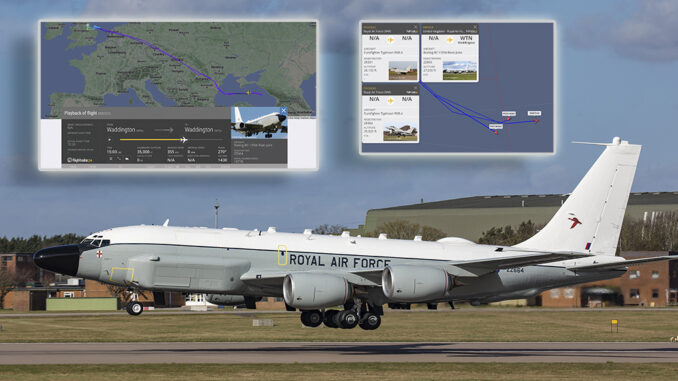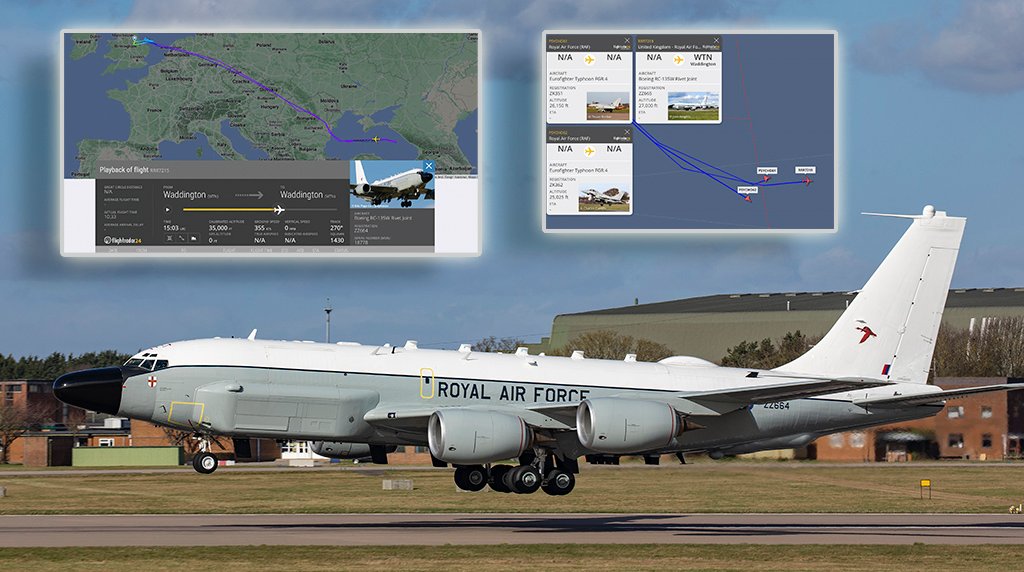[ad_1]

According to the Defence Secretary Ben Wallace, the “release” was the result of a technical malfunction. The Rivet Joints are now escorted by RAF Typhoons over the Black Sea.
On Sept. 29, 2022, a Royal Air Force RC-135W had a close encounter with two armed Russian Su-27 Flanker jets, as it was performing an almost routine surveillance patrol in international airspace over the Black Sea. During the “interaction”, that lasted about 90 minutes, one of the Russian fighters “released a missile in the vicinity of the RAF Rivet Joint beyond visual range”.
This is what UK Defence Secretary Ben Wallace said in a statement updating MPs on Oct. 20, 2022, describing the incident as a “potentially dangerous engagement” that, however, did not appear to be a “deliberate escalation” but the result of a technical malfunction (in agreement with the outcome of Moscow’s investigation).
A look at the historical data in FR24.com provides additional details about the incident on Sept. 29. Flying as RRR7215, the aircraft with registration ZZ664, took off from RAF Waddington, UK, to carry out a patrol over the Black Sea off Crimea. The total flight time was more than 10 hours and 30 minutes, but the actual “on station” time (that we can roughly consider as the time the Rivet Joint flew “feet wet” over the Black Sea, was about 3 hours, from 13.43UTC to 16.30UTC).
Based on the data gathered by Flightradar24, the spyplane always operated at high altitude, between FL350 and FL360.

While the incident itself does not seem to be particularly relevant, as everything suggests a missile fell from one of the outer pylons of the Flanker and was not “fired”, it’s at least interesting to note that the Rivet Joint flying over the Black Sea were given a fighter escort.
In fact, according to Mr Wallace, the patrols were suspended until the UK received a response from Russia, but they have now resumed and the Rivet Joint ISR (Intelligence Surveillance Reconnaissance) aircraft are escorted by RAF Eurofighter Typhoons. The presence of the fighter escort was noticed on Oct. 18, when both an RC-135W and two Typhoons could be tracked online on Flightradar24.com.
x2 RAF Typhoons #PSYCHO61 #PSYCHO62 and a RAF RC-135W River Joint currently heading Southeast over the Black Sea, very unusual pic.twitter.com/FOZVK11RHF
— Globe Sentinel (@GlobeSentinels) October 18, 2022
Again, based on the historical data by FR24, the one on Oct. 18, 2022, when the Rivet Joint was escorted by two Typhoon was also the first time the RAF RC-135Ws had flown again a Black Sea mission, possibly meaning it took some weeks for both the British and Russian sides to close the investigations into the incident (the RC-135s flew at least a couple of missions over Eastern Europe, but none was over the Black Sea, where there are chances of interception by Russian fighters).
As we have often explained here at The Aviationist, the RAF RC-135W Rivet Joint aircraft are operated by 51 Squadron, which is part of the RAF’s Intelligence Surveillance Target Acquisition and Reconnaissance Force. The RC-135W is an intelligence gathering plane that usually monitors communications: the aircraft is equipped with all sorts of antennae and sensors, to eavesdrop enemy signals, transmissions, detect frequencies used by radio and radars and pinpoint sites of interest, mobile stations, SAM batteries, etc. According to the Royal Air Force, RC-135W Rivet Joint employs multidiscipline Weapons System Officer (WSO) and Weapons System Operator (WSOp) specialists whose mission is to survey elements of the electromagnetic spectrum in order to derive intelligence for commanders.
UK received their first of three RC-135W (KC-135R Stratotankers converted to RC-135W configuration at prime contractor L-3 Communications’ facility at Majors Field, Greenville, Texas), with registration ZZ664 in December 2013. The Second RC-135W Airseeker ZZ665 (ex-USAF/64-14838) was delivered direct from L-3 Communications’ facility in Texas to RAF Mildenhall as ‘SAME 40’ on Sept. 13 2015. The third and final RC-135W Airseeker (ZZ666), converted from KC-135R (64-14840), was delivered in 2017.
Although it had been formally named Airseeker but is almost universally known in service as the RC-135W Rivet Joint.
[ad_2]
Source link
